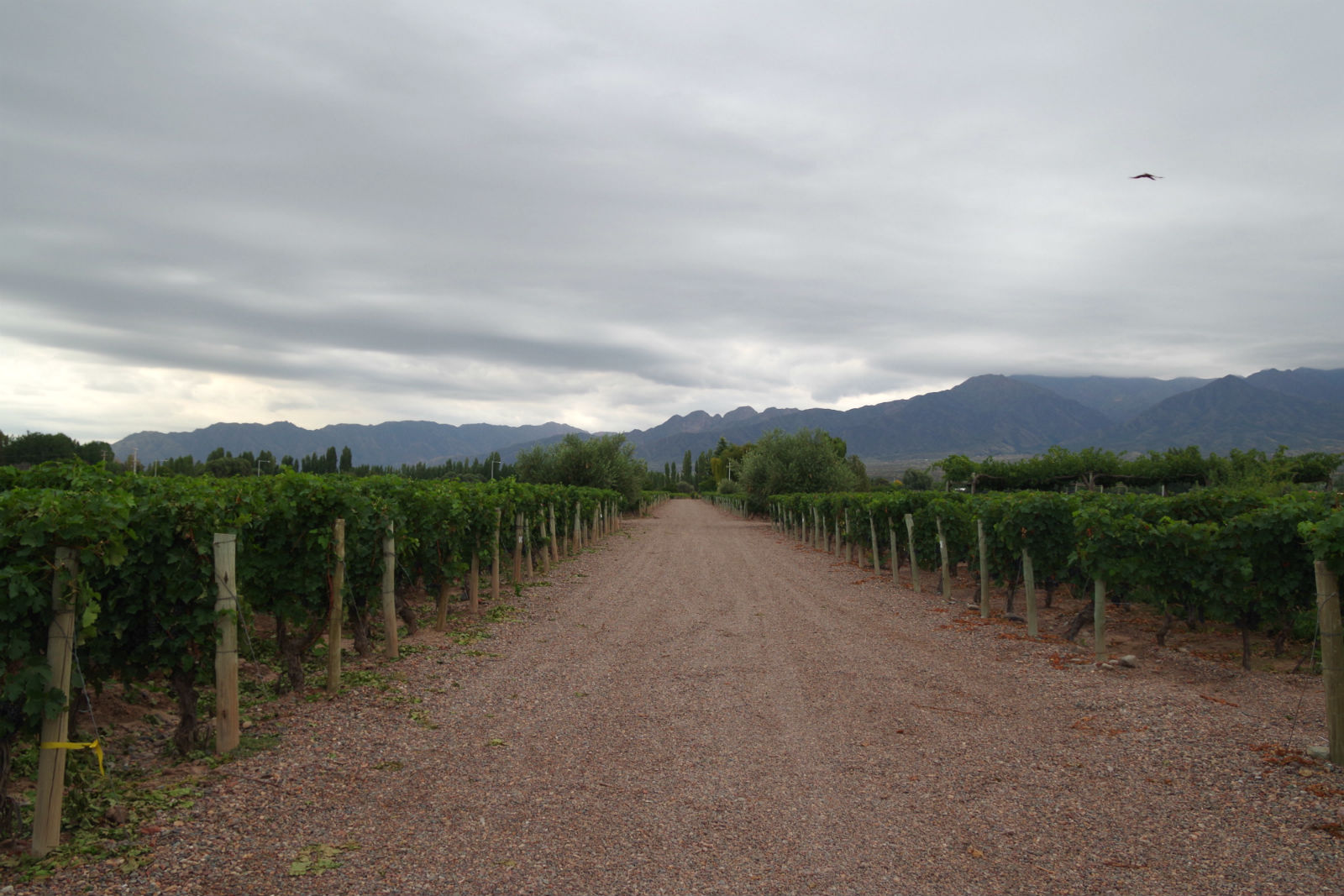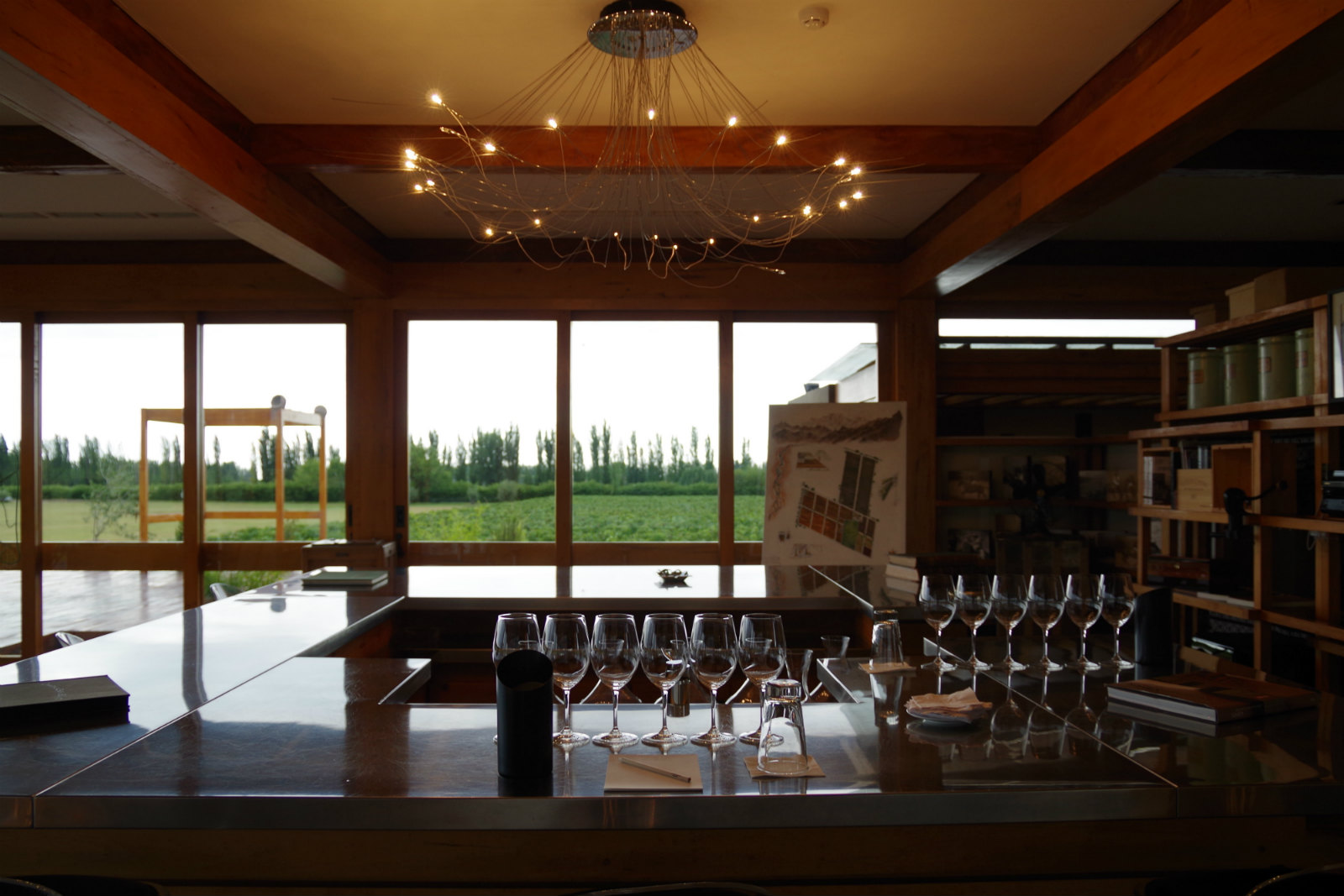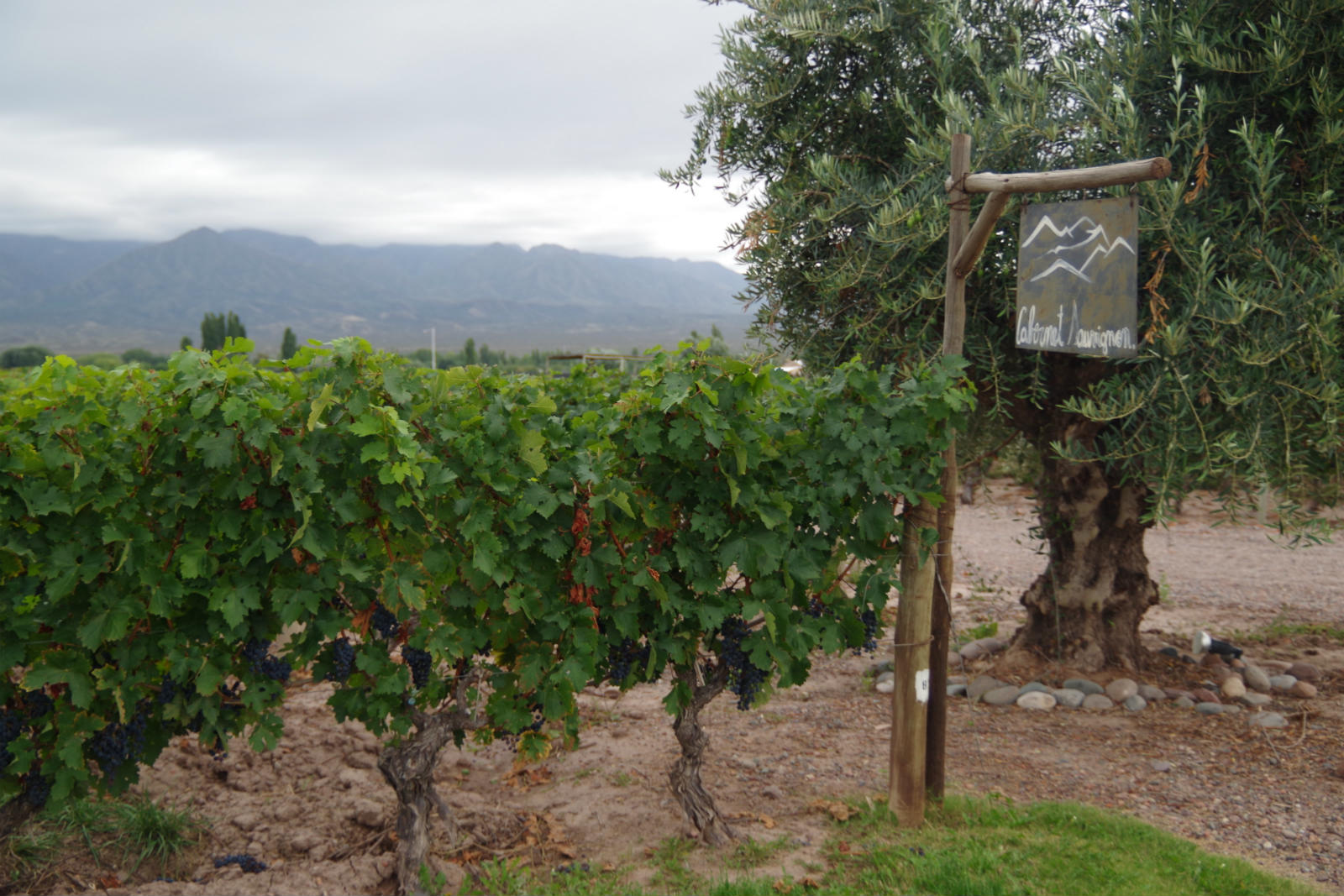Exploring the Mountainside Vineyards of Cheval des Andes Wines, Mendoza
From the unique terroir to a blended vision of the past and future

The oldest Malbec vine on the 35-hectare Cheval des Andes estate—located just outside the town of Mendoza, Argentina—dates back to 1929. Once, the Malbec grape flourished in Bordeaux, France. An insect known as the phylloxera would decimate it in the 1860s and a frost would do so again in the 1950s, but in South America it would remain untouched. Malbec vines sprawl across the Cheval des Andes vineyard, which abuts the Andean Precordillera (a smaller range that introduces the Andes proper on the side of Argentina). Malbec makes up a vast percentage of the Cheval des Andes red wines, but there’s more than just the grape. A visit to the estate—on a gray day just a few weeks before the South American harvest—revealed many factors that have led to the glowing reception the wine has received since its vintage debut in 1999.

Pierre Lurton might be one of the most famous names in modern winemaking. Lurton oversees the prestigious Château Cheval Blanc label (housed in Bordeaux) and he is also one of the creative forces behind Cheval des Andes. Lurton toured Argentina in the late ’90s, seeking out a new world terroir that would be receptive to the traditional methods of production that drew Cheval Blanc its acclaim. He visited LVMH sister site Terrazas des Andes and ended up at the 80-year-old Las Compuertas vineyard. He was moved by the location—the closest to the mountains—and delighted by wines from the region. Cheval des Andes resulted from this inspiration and desire.

Many components make up terroir and, walking through the vineyards, all elements become evident. More than just providing a view of stone rising beyond, the mountains effect both the soil and the weather. Lurton knew this and understood it would impact the wine. As Lorenzo Pasquini, Technical Manager and Winemaker at Cheval des Andes, shared with us as we strolled through the vines, “The most important thing is location. There are no vineyards between us and Andes. This is very important for fresh grapes. Fresh grapes means fresh wine and for us fresh wine means age-able wine.” Proximity to the mountains means the soil is halfway between rich, rocky and sandy (the region itself can be desert-like). Smaller grains move down in elevation through wind and rain. It makes for substantial soil for Malbec grapes to grow. Further, the mountains catch weather systems moving westward—allowing for adequate natural irrigation and temperature moderation.

Another less tangible element appears when walking through the ripened vines. There’s a liveliness to the grounds: horses and dogs reside on the premises, and birds can be heard chirping. It’s not staid but active. Even its height above sea level lends to its impact. “The vineyards are at almost 11,000 feet. It’s very high for most places in the world. Altitude keeps freshness and slows down the ripening. It allows for the accumulation of sugars and allows for the maturation of tannins,” Pasquini continues. The grapes are then vinified at a dedicated part of the Terrazas facility, though they plan on having their own winery in the near future. The Terrazas winery dates back to 1898 and lends its historic impact, but Pasquini affirms that it is the farming and looking after the grapes that imparts something greatest importance.

An aged wine, or a wine made to age well, has been an uncommon product in the region—despite the fact that wine has been produced there for hundreds of years. While Mendoza and the surrounding towns and villages boom with escalating wine production, much of it is for immediate consumption. There’s been increased interest in both South American and Argentine wines of late, and Malbec has surged in popularity. But Cheval des Andes is trying to produce for longevity. Pasquini furthers this notion by expressing his knowledge of the areas irrigation systems—developed by the Incas, altered by Europeans, and uniting to become what they use today: a modern flood irrigation system that employs the impact of nature.

While Malbec is the principal component of Cheval des Andes, four other grape varietals are grown on site including Cabernet Sauvignon. The other varietals add notes and flourishes to the wine. The wine, of course, matters most. In their earliest vintages, the brand presented old world wine crafted from new world terroir and grapes—baring the flourishes of such. Their latest iterations, and those forthcoming which we had a chance to sample, maintain that traditional sense of refinement, but there’s greater buoyancy. These aren’t highly acidic wines nor are they overly sweet South American reds. There is an intensity to them (especially in the forthcoming 2012) but these are top tier Argentine wines, guided by the hands of French masters.
Cheval des Andes wines can be around the world using their online store locator.
Images by David Graver












